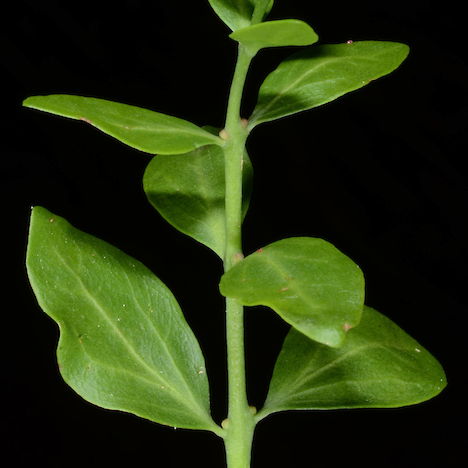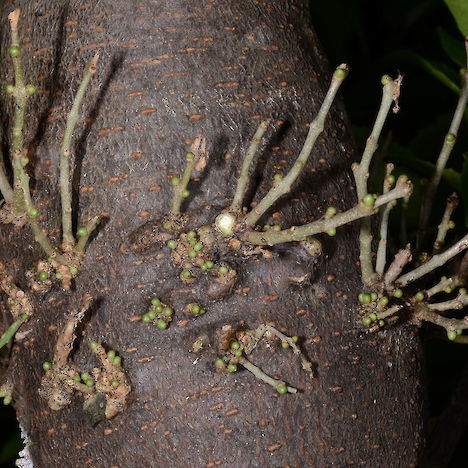Threat category:
At Risk: Declining?Regions:
Northland, Auckland, Waikato, Bay of Plenty, Gisborne, Hawkes Bay, Manawatu-Wanganui, Taranaki, Wellington, Nelson-Tasman, Marlborough, Westcoast, Canterbury, Otago, SouthlandDistribution:
North Island and South Island
Key Features
- A shrubby parasite to 1 m diameter, with narrow-oblong bright green leaves 2-6 cm long, that are arranged in opposite pairs.
- Flowers are much smaller than in red or scarlet mistletoe, and change colour from yellow to orange as they age.
- Flowers occur in clusters of 2-11 and give rise to small, egg-shaped, white, yellow, pink or red fruits.
Distribution and Habitat
- Throughout New Zealand but with a predominantly eastern distribution.
- Often in secondary vegetation where a range of short-lived native and exotic species act as hosts, including marbleleaf, broom, and species of Coprosma, Pittosporum, and Pseudopanax.
Threats
- Habitat modification and loss.
- Possum browse.
- Decline of birds (chiefly bellbird and tui) associated with pollination and dispersal.
- Fungal disease.
Management Opportunities
- Survey for new locations.
- Mark known sites.
- Protection of habitat.
- Enhance habitat for bellbirds and tui (e.g. by planting nectar-producing species such as flax and kowhai).
- Possum control by poisoning or trapping, caging plants or banding host trees.
- Ensure that forest owners are aware of potential habitats and can recognise the species.
Monitoring Options
- Check existing populations annually.
- Report new locations to DOC, NZPCN.
Further Information and Support
- New Zealand Plant Conservation Network (NZPCN). http://www.nzpcn.org.nz
- References:
- Dopson et al. (1999). The conservation requirements of New Zealand’s nationally threatened vascular plants. Threatened Species Occasional Publication 13. Department of Conservation, Wellington.
- Poole & Adams (1994). Trees and shrubs of New Zealand. Maanaki Whenua Press, Lincoln.




